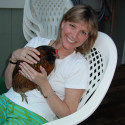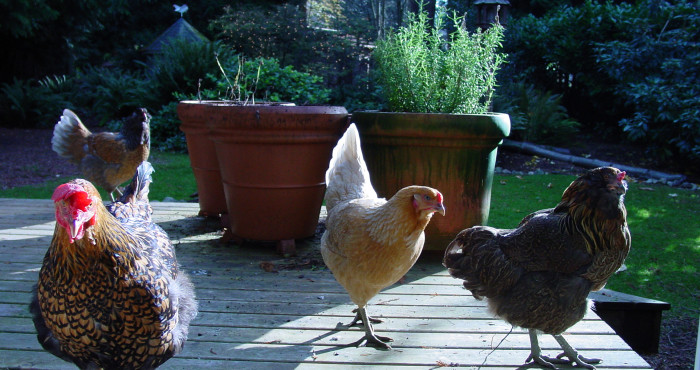In addition, we found that a rifampicin-resistant RNA polymerase activity dependent on de novo protein synthesis is required for late transcription. Superresolution fluorescence microscopy based on covalent labeling highlights specific proteins and has sufficient sensitivity to observe single fluorescent molecules, but the reconstructions lack detailed cellular context. Accurate replication and segregation of the bacterial genome are essential for cell cycle progression. 7/2016. The roles of genetic networks, gene regulation ,organogenesis, tissue patterning, cell lineage, maternal inheritance, cell-cell communication, signaling, and regeneration in developmental processes in well- studied organisms such as Stanfords Lucy Shapiro receives National Medal of Science. CHAMPER, R., Bryan, R., Gomes, S. L., Purucker, M., Shapiro, L. ANALYSIS OF THE PLEIOTROPIC REGULATION OF FLAGELLAR AND CHEMOTAXIS GENE-EXPRESSION IN CAULOBACTER-CRESCENTUS BY USING PLASMID COMPLEMENTATION. Gilbert Building 371 Jane Stanford Way Stanford, CA 94305 Phone: 650-723-2413 biologyinfo [at] stanford.edu Campus Map The ffs36 phenotype results from a single base change in one of the non-conserved stems of the mature RNA, and is completely rescued by a compensating mutation in the opposite strand, providing confirmation of the predicted secondary structure of the 4.5 S RNA. However, all plasmids tested showed a ten- to 20-fold higher replication rate in the stalked cells than the swarmer cells. View details for Web of Science ID 000252065900012, View details for DOI 10.1016/S0166-526X(08)00218-3, View details for Web of Science ID 000310710400021. The experience inspired him to apply after he graduated in 2013, and he was accepted. Flagellar and chemotaxis genes are transcribed at a discrete time in the Caulobacter cell cycle. Defects in the cheB gene resulted in greatly reduced chemotaxis-associated methylation in vivo and a loss of methylesterase activity in vitro. alarid@oncology.wisc.edu
Ph.D., 2015, University of Utah (Oncological Sciences) NIH Developmental Biology Training Grant graduate trainee. The flgH gene, encoding the L-ring protein, is also transcribed from an internal promoter. See all the current Searle Scholars here. Bayas, C. A., Wang, J., Lee, M. K., Schrader, J. M., Shapiro, L., Moerner, W. E. A Polar Matrix Microdomain Constrains Diffusion and Regulates Intracellular Signaling. This pathway is parallel to, and probably evolved from, a system used for construction of the bacterial flagellum. A., McAdams, H. H., Shapiro, L. Coordination of chromosome replication and cell cycle progression in Caulobacter, Coordination of DNA replication and cell division in Caulobacter crescentus, Getting organized - how bacterial cells move proteins and DNA, Multiplexed Quantitative Proteomics Using Mass Spectrometry. 235:472-485, 1994). The essential dnaN gene encodes a homolog of the Escherichia coli beta subunit of DNA polymerase III. Homology between the IS elements and various genomes was determined by hybridizing labeled DNA containing IS1, IS2, and IS5 sequences to Southern blots of chromosomal DNA cleaved with restriction endonucleases. View details for DOI 10.1038/sj.emboj.7600935, View details for Web of Science ID 000234952500011, View details for PubMedCentralID PMC1383518. Marczynski, G. T., Dingwall, A., Shapiro, L. A CAULOBACTER GENE INVOLVED IN POLAR MORPHOGENESIS. The chromosome is specifically and dynamically localized over the course of the cell cycle. Here, utilizing genetic, biochemical, and biophysical studies of GapR in light of a recently published DNA-bound crystal structure of GapR, we identified the structural elements involved in oligomerization and DNA binding. The expression of cell cycle events in Caulobacter crescentus CB13 has been shown to be associated with regulation of carbohydrate utilization. Thus, temporal activation of the PerP protease and spatial restriction of the polar PodJ(L) substrate cooperatively control the cell cycle-dependent onset of Rip. In the recent years, considerable advances have been made towards understanding the structure and function of the bacterial chromosome. We study multiple different organs, trying to identify common principles, and we extend these investigations to cancer and injury repair. Northern blot analysis revealed a single 4.0-kilobase mRNA homologous to the cloned fragment. Herrmann, J., Comerci, C., Yoon, J., Jabbarpour, F., Shapiro, L., Wakatsuki, S., Moerner, W. E. Biomolecular Condensates at Bacterial Cell Poles Function to Drive Spatially Restricted Signal Propagation, A Bacterial Biomolecular Condensate Sequesters a Signaling Pathway that Drives Spatial Regulation of Gene Expression and Asymmetric Cell Division. By deciphering the underlying design principles, we hope to generate pure populations of these cell-types from embryonic and induced pluripotent stem cells for regenerative medicine. Yeh, Y., Comolli, L. R., Downing, K. H., Shapiro, L., McAdams, H. H. Imaging-Based Identification of a Critical Regulator of FtsZ Protofilament Curvature in Caulobacter. The Shapiro Family Laboratory of Viral Oncology and Aging Research is shared by four PIs (Drs. It does so by binding directly to the parS centromere region of the chromosome, and mutations that alter this interaction result in cells that display aberrant centromere translocation and cell division. View details for DOI 10.1073/pnas.062065699, View details for Web of Science ID 000174856000089, View details for PubMedCentralID PMC123699. Strains with mutations in one of these genes, flaS, cannot transcribe flagellar structural genes and divide abnormally. These results provide access to the functions of C. crescentus heat-shock proteins under both normal and stress conditions. We propose that these genes are preferentially transcribed from the chromosome in the incipient swarmer cell pole of the predivisional cell. Stanford Computational Policy Lab. Cryogenic correlative light and electron microscopy (cryo-CLEM) seeks to leverage orthogonal information present in two powerful imaging modalities. View details for Web of Science ID A1980JX98100009. View details for DOI 10.1128/JB.185.6.1825-1830.2003, View details for Web of Science ID 000181448900009, View details for PubMedCentralID PMC150134. View details for DOI 10.1073/pnas.0402153101. Upon the clearance of CtrA from the cell, the DnaA protein accumulates and allows loading of the replisome at the origin. Understanding the control logic in the bacterium Caulobacter crescentus has progressed to the point where we now have an integrated systems view of the operation of its entire cell cycle functioning as a state machine. pilA transcription is regulated by the global two-component response regulator CtrA, which is essential for the expression of multiple cell cycle events, providing a direct link between assembly of the pilus organelle and bacterial cell cycle control. An additional layer of complexity was recently uncovered, showing that each segment of the chromosome is located at a specific cellular position both during and after the completion of DNA replication, raising the possibility that this positioning contributes to temporal and spatial control of gene expression. John Vaughen in Tom Clandinin lab successfully defended his thesis titled Sphingolipid Control of Neural Circuits by Glial Catabolism. Search this site Submit Search. View details for DOI 10.1073/pnas.1000846107, View details for Web of Science ID 000275368400036, View details for PubMedCentralID PMC2842071. These activities are in a multienzyme complex in Escherichia coli, but a similar complex was not observed in C. crescentus. View details for DOI 10.1016/j.mib.2016.06.007, View details for PubMedCentralID PMC5069156. Our data demonstrate the potential for further development of borinic esters as antibacterial agents as well as leads to explore more specific inhibitors against two essential bacterial enzymes. We have isolated DNA from this region of the chromosome by using a nonmotile mutant with a Tn5 insertion into flaE. Using genetic screens and cellular approaches in zebrafish, we aim to discover new genes with essential functions in glial cells, define new animal models of important disorders in humans, and provide new avenues toward therapies for injury and disease of the nervous system. Research Abstract. After phage infection at least 40 proteins are phosphorylated; these include DNA-binding proteins, a membrane-associated protein, and several ribosomal proteins. Understanding the control logic in the bacterium Caulobacter crescentus has progressed to the point where we now have an integrated systems view of the operation of its entire cell cycle functioning as a state machine. Pilus assembly in CAULOBACTER: crescentus occurs during a short period of the cell cycle and pili are only present at the flagellar pole of the swarmer cell. We have shown that the pilA promoter is activated late in the cell cycle and that transcription of the pilin subunit plays an important role in the timing of pilus assembly. For large aggregates, such as the clusters of MCP, CheA, and CheW complexes, perhaps the size of the aggregate alone prevents displacement. View details for Web of Science ID A1992HJ50200007. Stephens, C. M., Zweiger, G., Shapiro, L. THE BACTERIAL FLAGELLUM - FROM GENETIC NETWORK TO COMPLEX ARCHITECTURE, IDENTIFICATION OF A NOVEL PROTEIN OR PROTEIN DOMAIN INVOLVED IN INITIATION OF DNA-REPLICATION IN CAULOBACTER, TEMPORAL AND SPATIAL CONTROL OF CELL-DIFFERENTIATION DURING A BACTERIAL-CELL CYCLE. Expression of the latter two phenotypes required complex media and both were repressed by glucose. The DnaA regulon includes genes encoding several replisome components, the GcrA global cell cycle regulator, the PodJ polar localization protein, the FtsZ cell division protein, and nucleotide biosynthesis enzymes. We have developed a technique, termed superresolution by power-dependent active intermittency and points accumulation for imaging in nanoscale topography (SPRAIPAINT) that combines imaging of intracellular enhanced YFP (eYFP) fusions (SPRAI) with stochastic localization of the cell surface (PAINT) to image two different fluorophores sequentially with only one laser. View details for DOI 10.1073/pnas.0807448105, View details for Web of Science ID 000260360500041, View details for PubMedCentralID PMC2563096. View details for Web of Science ID A1997WQ86300029, View details for PubMedCentralID PMC178970, View details for Web of Science ID A1997WM41300002. View details for Web of Science ID A1979HV87000039. We examined the cellular position of 112 individual loci that are dispersed over the circular Caulobacter crescentus chromosome and found that in living cells each locus has a specific subcellular address and that these loci are arrayed in linear order along the long axis of the cell. Dr. Lauren M. Shapiro is an orthopedist in Stanford, California. santanu2@illinois.edu
Caulobacter crescentus assembles a single polar flagellum at a defined time in the cell cycle. The genes involved in the biogenesis of the flagellum and the chemotaxis machinery are temporally regulated during the Caulobacter crescentus cell cycle. Bryan, R., CHAMPER, R., Gomes, S., Ely, B., Shapiro, L. GENERAL NONCHEMOTACTIC MUTANTS OF CAULOBACTER-CRESCENTUS. The bacterial heat shock proteins DnaK and DnaJ are members of a class of molecular chaperones that are required for a wide variety of cellular functions at normal growth temperatures. 2017 Indian Institute of Technology, University of Wisconsin-Madison
The cellular localization of MipZ thus serves the dual function of positioning the FtsZ ring and delaying formation of the cell division apparatus until chromosome segregation has initiated. Regulated timing of these cellular modules stems from global genetic circuits that allow precise temporal activation with respect to cell cycle progression and cell differentiation. View details for Web of Science ID A1995QP81000003, View details for PubMedCentralID PMC176791, View details for Web of Science ID A1995QJ60200003, View details for Web of Science ID A1995QQ99700450, View details for Web of Science ID A1995QQ99701144. CtrA is a member of the response regulator family of two component signal transduction systems. Letts, V., Shaw, P., Shapiro, L., Henry, S. INVITRO TRANSCRIPTION OF THE EARLY REGION OF CAULOBACTER PHAGE PHI-CD1 DEOXYRIBONUCLEIC-ACID BY HOST RNA-POLYMERASE, 3-DIMENSIONAL RECONSTRUCTION OF THE FLAGELLAR HOOK FROM CAULOBACTER-CRESCENTUS. CtrA binds to and regulates the promoters of two genes critical to its temporally controlled proteolysis, divK and clpP, providing a transcriptional feedback loop for the control of cell cycle progression. Goley, E. D., Dye, N. A., Werner, J. N., Gitai, Z., Shapiro, L. CrfA, a small noncoding RNA regulator of adaptation to carbon starvation in Caulobacter crescentus. Alley, M. R., Gomes, S. L., Alexander, W., Shapiro, L. TEMPORAL AND SPATIAL REGULATION OF DEVELOPMENTALLY EXPRESSED GENES IN CAULOBACTER, EXPRESSION OF POSITIONAL INFORMATION DURING CELL-DIFFERENTIATION IN CAULOBACTER. Dahlberg, P. D., Saurabh, S., Wang, J., Sartor, A. M., Chiu, W., Shapiro, L., Moerner, W. E. Continuous, Topologically Guided Protein Crystallization Drives Self-Assembly of a Bacterial Surface Layer. Further, we find that overexpression of the bridge protein SpmX in Caulobacter disrupts this ordered assembly, generating ectopic cell poles containing both PopZ and DivJ. We generated strains that carry ccrM either on a low-copy-number plasmid (strain GR131) or on a moderate-copy-number plasmid (strain GR132). Transcription initiation has been shown to occur in vitro at several sites within a cloned Caulobacter crescentus ribosomal RNA gene cluster that lacks the major promoter region 5' to the 16 S rRNA gene. We investigate the midplane protein FtsZ in Caulobacter crescentus with super-resolution imaging based on fluorescent-protein photoswitching and the natural polymerization/depolymerization dynamics of FtsZ associated with the Z-ring. At specific times in the cell cycle, the bacterium Caulobacter crescentus assembles two major polar organelles, the flagellum and the stalk. Lucy Shapiro is a Professor in the Department of Developmental Biology at Stanford University School of Medicine where she holds the Virginia and D. K. Ludwig Chair in Cancer Research and is the Director of the Beckman Center for Molecular and Genetic Medicine. Neither phosphatidylethanolamine nor its precursor phosphatidylserine was detected. These results demonstrate that MCP methylation is confined to that portion of the cell cycle when flagella are present. View details for DOI 10.1128/JB.185.2.573-580.2003, View details for Web of Science ID 000180272600023, View details for PubMedCentralID PMC145339. Since many of these constructs are also suitable for use in other bacteria, this work provides a comprehensive collection of tools that will enrich many areas of microbiological research. Obituaries Greenwich, Ny,
Branson Famous Theatre Seating Chart,
Adopter Un Paresseux Au Canada,
Articles S
houses for sale in tasmania under $50,000









